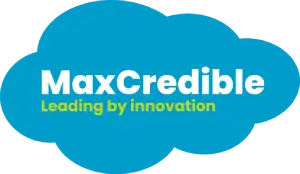How to take your CRM to the next level with compatible Credit Management Software.
How to take your CRM to the next level with compatible Credit Management Software.
What do CRM and Credit Management have in common? Credit management is a logical part of CRM and could take your first contact to cash process to another level. But we still see that credit management is often detached from CRM, unnecessarily increasing costs and prolonging the order to cash cycle.
Here are some benefits of integrating credit management data streams and functionalities into your Customer Relationships Management software.
1) Lower Risk Targeting and Acquisition
The acquisition takes time and money. From your content marketing and social media to sales, you find prospects and spend significant amounts to convert them into paying clients. So what happens when they don’t pay?
Your business incurs all the acquisition costs and all the processing that follows: invoicing, products or services you procured for the clients, customer service, dunning, and collection. Most often, you can avoid all that if you have current information about customers’ paying behaviors.
Incorporating credit rating data streams from the credit management software into your CRM can save you a lot of trouble targeting and selling to clients with a bad reputation that simply can’t or won’t pay you down the line. You can also avoid non-paying or abusive repeat clientele or tailor your offer, risk factoring, and collection communications to potentially difficult obligors.
2) Unified Customer Communications
When converting leads, your marketing and sales departments entice your target groups with highly personalized offers and communication.
But once the sale has been made, often the customer gets diverted from sales to your collections funnel, where the communication might not be as tailor-fit or up-beat. It can create a sense of shock and an unpleasant customer experience for your paying client base, especially if you set your dunning communication based on your previous negative experience with non-paying customers.
By combining CRM with credit management, you can unify all your customer communications throughout the entire customer journey and, for example, customize your dunning by customer segmentation. That helps improve your collections from obligors with a history of non-genuine excuses while not alienating paying customers who may have genuine reasons for delayed payments.
3) Complete Customer Data Management
Imagine that you get a client into the collections process and spend the first few calls learning about all the ways the client is unhappy with your products and services? Perhaps, they never received their order or never got the invoice. Perhaps they had a negative experience with your customer service.
In companies where the data collection is manual or scattered between different databases and systems, preparing for collection follow-ups can be quite an ordeal. If there was a problem at any stage of your contact to cash cycle that you don’t know about, it will leave a wrong impression and might just be the excuse your client needs not to pay you at all.
Professional obligors who enter deals without an intent to pay may even benefit from your company’s lack of data organization. By the time you realize their excuses are non-genuine, the invoices might be more than 90 days past due, and your chances to collect the full amount become statistically minimal.
Combining your CRM with credit management gives you instant access to the whole customer history, equipped with data analysis, useful insights, and alerts. It enables you or your employees to spend less time gathering data across systems and departments and more time effectively communicating with demanding clients.
4) Better Data and Knowledge Flow
Multiple data sources scattered across systems and departments with limited cross-department communication can severely impair collections and decrease cash flows.
Additionally, due to ever-increasing employee turnover, you are always at risk of a potential loss of expert knowledge, and with many systems and data scattered, it will likely be difficult to train new employees to quickly take over collection cases, putting you further in the red.
Unified CRM with credit management software offers a single source of truth for the whole organization, updated real-time with internal and external information on the customer’s status and behaviors, to help all your departments make data-driven decisions and give useful feedback about clients for other departments.
Easy-to-use software equipped with the information and company strategies helps lower knowledge loss risk and quickly onboard new employees to your processes and customer management. The SaaS models are also easy to implement across the whole company with minimal training and no downtime.
